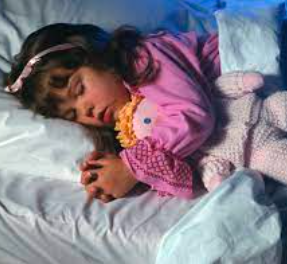Sleep is a vital part of a child’s growth and development, but building a healthy sleep schedule can feel challenging for many families. Between busy school days, extracurricular activities, and changing bedtime moods, it can be hard to find a rhythm that works. Yet with patience, consistency, and a few simple strategies, parents can guide children toward better rest that benefits both body and mind.
Why Sleep Matters for Kids
Children need more rest than adults because their bodies and brains are developing at a rapid pace. Good sleep supports learning, emotional balance, and physical growth. A consistent bedtime routine helps children feel secure, lowers nighttime stress, and makes mornings much easier for everyone. Kids who follow a healthy schedule are often more focused at school, have steadier moods, and enjoy stronger immunity against common illnesses.
Setting the Right Sleep Goals
The first step in shaping a schedule is understanding how much sleep children need. Younger kids, such as toddlers and preschoolers, may require 10 to 13 hours of rest each night, while school-age children typically do best with 9 to 11 hours. Teenagers also need around 8 to 10 hours, even though busy routines often cut into their rest. Knowing these general ranges helps parents plan realistic bedtimes and wake-up times.
Creating a Calming Evening Routine
Children thrive on predictability, so bedtime should feel like a familiar process rather than a sudden command. A calming routine might include a warm bath, brushing teeth, slipping into pajamas, and reading together. Keeping activities gentle and screen-free during the last hour before bed signals to the brain that it is time to wind down. Dimming lights in the evening can also help regulate the body’s natural sleep rhythms.
Choosing the Best Bedtime
Instead of picking a random bedtime, it is helpful to work backward from the time a child needs to wake up. For example, if school starts early and the wake-up time is six thirty, then a bedtime around eight thirty allows for ten hours of rest. Parents may need to adjust gradually if a child is used to staying up later. Moving bedtime earlier by fifteen minutes every few nights helps the body adapt without resistance.
Making the Bedroom a Restful Place
The sleep environment can influence how quickly and peacefully children fall asleep. A cool, quiet, and dark room is usually best. Blackout curtains, a comfortable mattress, and cozy bedding create a sense of comfort. Some children relax with soft background sounds, such as a white noise machine or gentle music. Keeping toys, electronics, and clutter away from the bed helps children associate their room with rest rather than play.
Encouraging Healthy Daily Habits
A child’s daytime activities also shape how easily they sleep at night. Regular physical movement, whether through play, sports, or simple outdoor time, helps release energy. Balanced meals and limited sugar close to bedtime reduce restlessness. Exposure to natural sunlight during the day supports the body’s internal clock, making it easier to feel tired when the evening arrives. Consistency across the whole day reinforces the idea of a steady rhythm.
Handling Bedtime Resistance
It is natural for children to test limits, and bedtime is no exception. Some may ask for “just five more minutes” or become suddenly full of energy. Instead of turning bedtime into a struggle, parents can offer gentle choices that still guide them toward rest. For example, allowing a child to pick which book to read or which pajamas to wear gives them a sense of control while keeping bedtime on track. Calm reassurance works better than negotiations or punishments, which can make children more alert instead of relaxed.
Adjusting for Weekends and Special Days
Many families relax their routines on weekends, but letting children stay up far later can make Mondays difficult. While occasional flexibility is fine, it is best to keep bedtimes and wake-up times within an hour of the usual schedule. This prevents what some experts call “social jet lag,” when the body clock is disrupted by inconsistent timing. Vacations, holidays, and sleepovers may require temporary adjustments, but returning to the familiar routine quickly helps children readjust.
Supporting Older Children and Teens
As children grow, their sleep needs shift, but the importance of a consistent schedule remains. Teenagers often feel tempted to stay up late with schoolwork, socializing, or devices. Parents can support them by encouraging screen limits at night and reminding them that rest is as important for success as studying. Open conversations about how tiredness affects mood and focus can help teens take more responsibility for their own schedules.
Recognizing Signs of Sleep Struggles
Sometimes, even with a good routine, children may show signs of difficulty. Frequent night wakings, loud snoring, or extreme tiredness during the day could signal a deeper issue. In such cases, consulting a pediatrician or sleep specialist may be helpful. Most sleep challenges, however, are temporary and improve once consistent routines are in place.
Patience and Persistence
Creating a healthy sleep schedule is not about perfection but about consistency over time. Parents may need to experiment with different routines until they find what works best for their child’s personality and age. What matters most is sending a clear, steady message that sleep is valued and protected in the household. Over weeks and months, children learn to embrace bedtime as a natural part of daily life.
Final Thoughts
Helping children build a strong sleep schedule is one of the best gifts parents can provide. Rested children are healthier, happier, and better prepared to grow and learn. With calming routines, consistent timing, and a supportive sleep environment, families can turn bedtime into a peaceful part of the day. When sleep becomes a predictable habit rather than a nightly challenge, both children and parents enjoy smoother evenings and brighter mornings.














